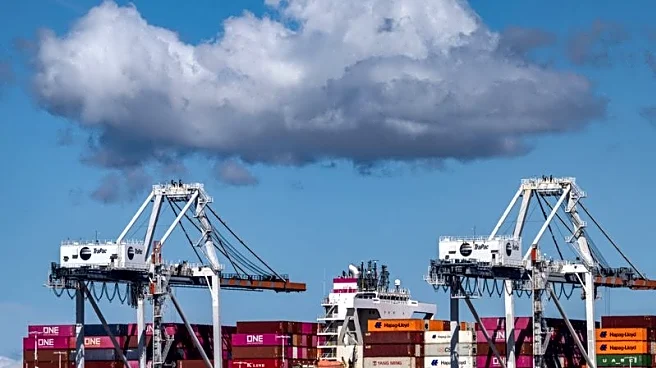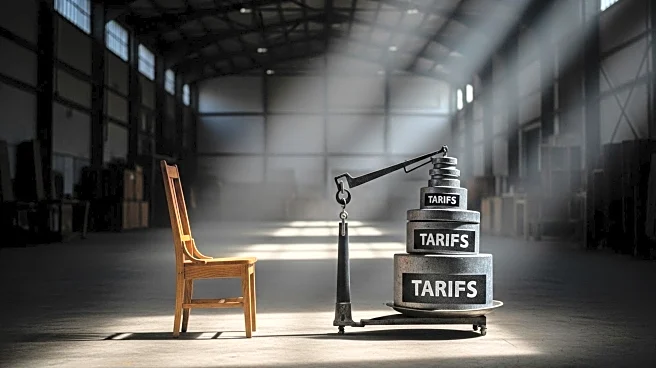What's Happening?
President Trump has announced new tariffs on Canadian lumber, increasing the existing tariffs by an additional 10%, which could result in tariffs exceeding 45% on Canadian softwood lumber imports starting
October 15. This move is part of a broader strategy to boost domestic timber production and reduce reliance on foreign lumber. The U.S. imports about 40% of its softwood lumber, with over 80% coming from Canada. The administration aims to meet 95% of domestic demand through U.S. production by easing regulations on timber harvesting. The Commerce Department has been tasked with assessing the impact of timber imports on national security, citing concerns over unfair pricing by Canadian companies.
Why It's Important?
The increased tariffs on Canadian lumber are significant as they aim to stimulate U.S. forestry investments and reduce dependency on imports. However, the effectiveness of these tariffs in encouraging long-term investments is uncertain due to challenges such as higher costs of domestic lumber and limited manufacturing capacity. The tariffs could affect housing costs, as lumber is a critical component in home construction. While tariffs may protect U.S. producers, they could also lead to higher prices for consumers and builders, impacting housing affordability. The move reflects ongoing trade tensions and the administration's focus on national security and economic independence.
What's Next?
The Trump administration plans to simplify timber harvesting processes to boost domestic production by 25%. The Commerce Department's national security investigation may lead to further policy changes. Stakeholders, including U.S. lumber producers and home builders, will likely monitor the impact of tariffs on prices and supply chains. Canadian companies may seek alternative markets or challenge the tariffs through trade negotiations. The housing market could experience fluctuations in construction costs, influencing broader economic activity.
Beyond the Headlines
The tariffs highlight the complex dynamics of international trade and domestic policy. While aiming to protect U.S. industries, such measures can strain diplomatic relations and lead to retaliatory actions. The focus on national security underscores the administration's broader strategy of economic self-reliance. Long-term shifts in the lumber industry may require balancing environmental concerns with economic goals, as increased domestic production could impact forest management practices.












